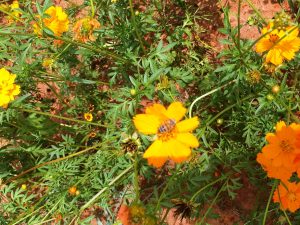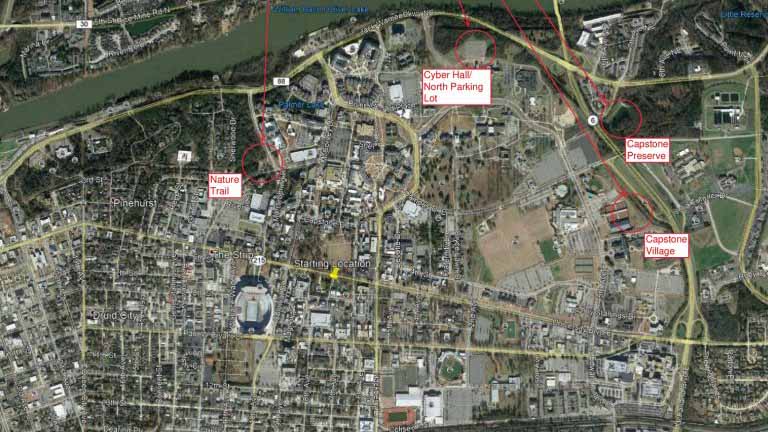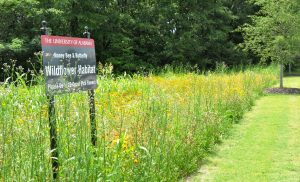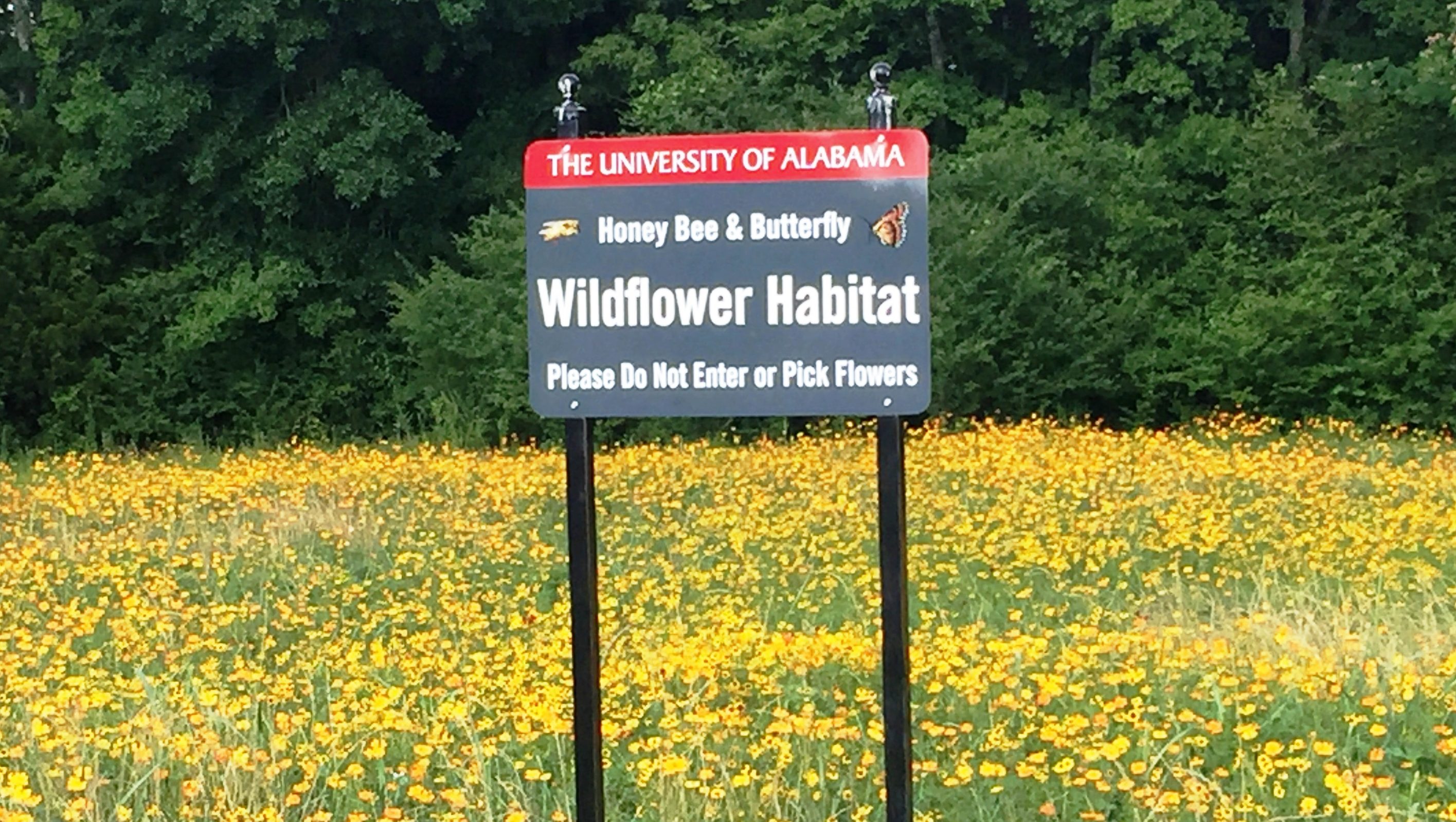
Struggling honeybees, butterflies thriving at UA thanks to dedicated habitats
The University of Alabama’s lush expanse of award-winning urban forest isn’t the only way that the Capstone practices sustainability.
UA also has four honeybee and monarch butterfly habitats on campus that were built to help the dying population of both species thrive.
“About four years ago I was reading some articles that said that honeybees were dying off not just in our nation, but worldwide,” said Col. Duane Lamb, associate vice president of University facilities and grounds. “And the same thing’s been happening to the monarch.
“Scientists are trying to figure out exactly what’s causing it. You hear it’s everything from climate change to too many pesticides, parasites, all sorts of things. The biggest factor, I think, is they’re losing their natural habitat all across our country.”
Loss of honeybees could mean loss of many of the plants we eat, Lamb said. “So I thought The University of Alabama could do its part.”
Lamb didn’t sit on the information long. He asked the vice president for Financial Affairs at that time, Dr. Lynda Gilbert, for permission to build honeybee and monarch habitats in unfrequented areas of campus to attract the vanishing insects and give them an undisturbed place to pollinate.
Once he got the green light, four half-acre to one-acre areas were dedicated to the project.

Donna McCray, senior director of facilities operations and grounds use, said the largest of the habitats is located behind the campus tennis courts off Peter Bryce Boulevard.
The other three are located behind Cyber Hall, in the Capstone Preserve and on the nature trail between The Park At Manderson Landing and Sherwood Forest.
Each habitat has an identifying sign warning spectators to stay out of the habitat. People are allowed to observe and take photos outside habitat boundaries.
“The ground crews tilled up the ground in those areas, put in some fresh top soil because some of our areas do have a little bit of clay,” Lamb said. “We put in a first batch of flowers and their seeds regenerate, which is cool from a sustainability perspective. We also put down a little bit of new seed each year.
“Three of the habitats are completely wildflower, but our habitat behind the tennis courts is about two-thirds wildflower and one-third white and red clover. The bees really like the clovers. The brighter the colors the more you attract bees and butterflies.”
The exact Southeastern wild flower seed mixture used in the habitats are lance leaved coreopsis, purple coneflower, perennial lupine, California poppy, annual baby’s breath, scarlet flax, four o’clock, sulphur cosmos, Indian blanket, mallow tree, dwarf blue cornflower, clasping coneflower, black-eyed Susan, plain coreopsis, and red and white clover.

About 50 pounds of wildflower and clover seed are used per acre, which is double the suggested amount, Lamb said.
The habitats don’t just attract honeybees and monarchs. They draw a variety of bee species, as well as birds and all types of other insects.
The teeming, unspoiled, floral oases have also garnered the attention of University biology classes, which spend time observing the habitats and collecting data.
“We obviously have one of the most beautiful campuses in the nation,” Lamb said. “To do something natural like this is not only beautifying but it’s helping future generations. Anything we can do to help this campus be beautiful and sustainable for the future is something we want to do, and it is the right thing to do.”
